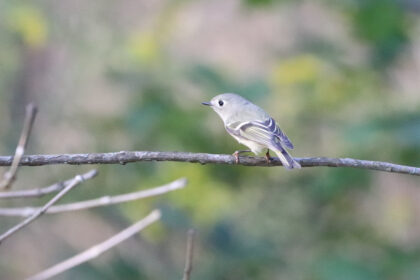The Ground is Coming Alive
Something magical is about to happen and it is as equally puzzling as it is extraordinary. The plants know it. Or at least some do. Some plants are more scrupulous. They seem to know to stay sunken before any and all chance of frost is gone, hunkered down in trepid anticipation.
But then there are the fearless few that reach for the sun not by temperature so much but more drawn by the daylight that gets a little longer every day. Like the Golden Ragwort (Packera aurea) pictured above.
Soon, they celebrate that mysterious time of “equal night”‒that twice a year phenomenon‒that plays a quiet second fiddle to the solstice. I bet you have even celebrated the arrival of the solstice. Yet, twice a year we have a solstice and twice a year we have an equinox. And it all comes down to a four letter word: axis.
Yet prior to writing this post, I honestly could not tell you a descriptive difference between the two. Thank you, Google, for sending me down an equinox rabbit hole that I am still digging my way through. To me, Equinox was a gym. Until now.
Were it not for the Earth’s tilt, we would not be excited for those super long days in summer and the long cold dark nights of winter that have you hunting for the light switches at 4:30 pm. (Keep in mind I am talking about the Northern Hemisphere, in the Southern it is the reverse.)
At noon on June 21 of each year the sun is directly overhead on the Tropic of Cancer, marking the beginning of summer in the Northern Hemisphere, the summer solstice. While in the Southern Hemisphere it marks the start of longest nights and the shortest days, and the bearing down of winter. And the Tropic of Capricorn is involved.
But on Tuesday, March 19th, your calendars may or may not tell you that it is the vernal equinox. Often called the Spring equinox. Think of this: the sun will rise and set nearly 12 hours apart on this day, the sun’s rays will shine on the equator while the tilt of the Earth’s axis is neither toward or away from the sun. This extraordinary event causes 12 hours of sunlight almost everywhere on Earth. And gives the moniker “equinox” the translation of equal night. Sometime in the fall, we hear about the autumnal equinox. Again, a time of year where both hemispheres celebrate an equal amount of light. (Side note, the logo for the Equinox gym now makes total sense!!!! A perfect circle with a line through it making it two perfectly shaped arcs.)
The leap year of 2024 is to thank for our earlier equinox this year. March 19th is nearly 2 days earlier than it normally occurs.
Can some bunny stop me?

This Earth is just too full of astronomical wonders and celestial events to keep track of. While I spend most of my spring days awaiting the arrival of the tree swallow, I also often find myself looking up. Seeing how the stars are changing. How the sun sets in a slightly different spot every night. And when I am not looking up, there are also the noticeable changes that are right in front of you, yet untouchable. Shadows. I notice more brightness on the floors with the way the sun pours through the doors, more lively action in the yard. I even feel like the clouds are floating higher in the sky…coaxing those trepid plants that it’s almost time. It is almost time for those short nights where the dawn comes sooner. It’s early this year, the equinox…but blame the cause on the leap year. Some plants are blooming early for a much, much different reason. That rabbit hole is more of a bolt hole. Some would rather run away from the climate change conversation.






